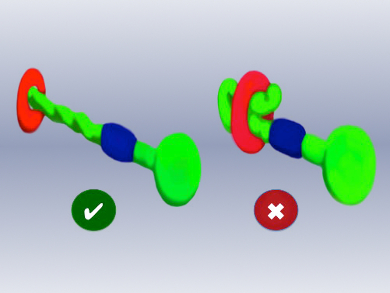The process of biopolymer translocation through pores formed by toroidal proteins is fundamental to numerous biological processes, including the transport of proteins across cell membranes, the infection of a host cell by viral DNA, and the packing of DNA into viral capsids. In addition, the mechanisms by which natural systems convert chemical energy into directed motion is also connected to transport phenomena through pores. Studying their mechanisms will provide in-depth information on the underlying principles of operation of these systems.
Alan E. Rowan, Roeland J. M. Nolte, and colleagues, University of Nijmegen, The Netherlands, present kinetic and thermodynamic studies on the threading mechanism of a macrocyclic porphyrin receptor onto molecular threads that are blocked on one side and open on the other. The open side was modified by groups that vary in ease of folding and in bulkiness. Additionally, the threads contain a viologen binding site for the macrocyclic receptor, which is located close to the blocking group.
The rates of threading of the receptor were measured under various conditions by recording as a function of time the quenching of the fluorescence of the porphyrin, which occurs when the receptor reaches the viologen binding site. The kinetic data suggest that threading is impossible if the receptor encounters an open side that is sterically encumbered in a similar way to a folded polymer chain. This indicates that threading of polymers through macrocyclic compounds through a folded chain mechanism is unlikely.
- Slippage of a Porphyrin Macrocycle over Threads of Varying Bulkiness: Implications for the Mechanism of Threading Polymers through a Macrocyclic Ring,
Alexander B. C. Deutman, Shaji Varghese, Mohamed Moalin, Johannes A. A. W. Elemans, Alan E. Rowan, Roeland J. M. Nolte,
Chem. Eur. J. 2014.
DOI: 10.1002/chem.201403740




